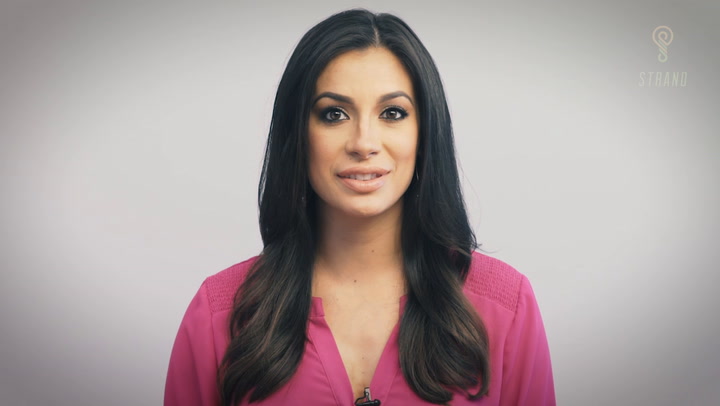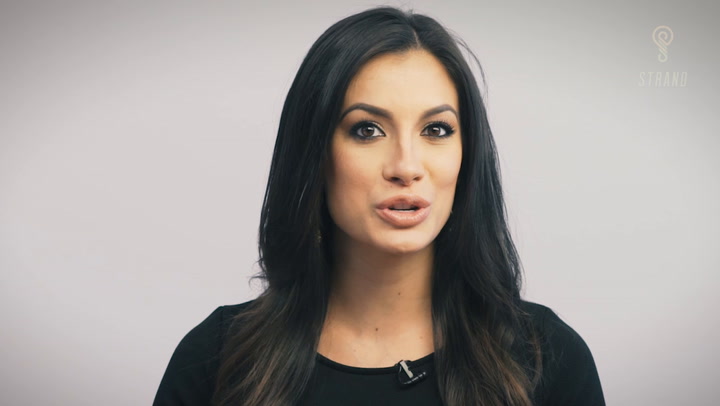Empowering your pharmacy to generate new forms of revenue through the process of credentialing and contracting is the goal of STRAND’s Training Center. By achieving an In-Network (Contracted) status with Insurance Payers you now have the ability to receive reimbursement for clinical services. Examples of these services would be: Diabetes Self-Management Education (DSME) and participation in the Diabetes Prevention Program (DPP). Many other clinical/billable services may be available in
your state.
The Most Common Credentialing and Contracting Steps:
- Gather Your Information
- Type 1 NPI (Individual), if required
- Type 2 NPI (Pharmacy)
- Pharmacy’s Tax ID
- Pharmacy’s Ownership Information
- Copy of Your Diploma
- Copy of Your Pharmacy License
- Copy of Your Pharmacy/Business License
- Copy of Your Certifications (such as AADE Accreditation Certificate)
- Identify which Payers you want to engage.
- Navigate to your state’s training center page, in order to obtain and complete enrollment forms.
- Submit your enrollment applications directly to the payer via the notated method.
- Once the payer accepts the enrollment application, the payer will provide a contract with reimbursement rates (fee schedule) and services notated.
- An 837 Electronic Data Interchange (EDI) must be established by you. The EDI assures HIPAA compliant electronic billing standards are met by verifying a pathway to submit health care claim billing information, encounter information, or both.
- Review the Claims Training Videos for additional resources and FAQ’s.
- Get started billing the payer and receiving new revenue!
Top 4 Questions Answered:
- You may need a CAQH Profile
- The Common Payer response time is 30-90 days from application submission
- You are responsible for contacting the Payer’s Provider Enrollment department (portal or phone number) to obtain an application status and updates.
- Common Reasons for Denied Applications:
- Misspelled Legal Business Name
- Incomplete Application
- Not uploading supporting documentation, such as copies of required licenses, certifications, etc.
- The NPI was entered incorrectly and/or the Type 1 NPI was entered instead of the Type 2 NPI
- When you receive a response, make sure that your enrollment covers the Medical Benefit rather than Pharmacy Benefit
Taxonomy Codes
In order to become correctly contracted with a payer, you must identify your specialty/specialties appropriately. This is accomplished using taxonomy codes that are associated with your NPI. In order to offer clinical services, you will need to reflect certain specific taxonomy codes.
To update your Taxonomy Codes please visit the NPPES website here.
Common Taxonomy Codes and Issues:
-
-
- If you are updating your taxonomy code for your Pharmacy NPI (type 2 NPI) do NOT add the taxonomy code for an individual Pharmacist (
183500000X), but rather choose the one for Pharmacy (333600000X). Associating the incorrect pharmacy/pharmacist taxonomy code will cause your enrollment applications with payers to be rejected.
- Some commonly used Taxonomy Codes are:
-
333600000X Pharmacy A facility used by pharmacists for the compounding and dispensing of medicinal preparations and other associated professional and administrative services. A pharmacy is a facility whose primary function is to store, prepare and legally dispense prescription drugs under the professional supervision of a licensed pharmacist. It meets any licensing or certification standards set forth by the jurisdiction where it is located.3336C0002X Clinic Pharmacy A pharmacy in a clinic, emergency room or hospital (outpatient) that dispenses medications to patients for self-administration under the supervision of a pharmacist.3336C0003X Community/Retail Pharmacy A pharmacy where pharmacists store, prepare, and dispense medicinal preparations and/or prescriptions for a local patient population in accordance with federal and state law; counsel patients and caregivers (sometimes independent of the dispensing process); administer vaccinations; and provide other professional services associated with pharmaceutical care such as health screenings, consultative services with other health care providers, collaborative practice, disease state management, and education classes.3336C0004X Compounding Pharmacy A pharmacy that specializes in the preparation of components into a drug preparation as the result of a Practitioner?s Prescription Drug Order or initiative based on the Practitioner/Patient/Pharmacist relationship in the course of professional practice. A compounding pharmacy utilizes specialized equipment and specially designed facilities necessary to meet the legal and quality requirements of its scope of compounding practice.3336H0001X Home Infusion Therapy Pharmacy Pharmacy-based, decentralized patient care organization with expertise in USP 797-compliant sterile drug compounding that provides care to patients with acute or chronic conditions generally pertaining to parenteral administration of drugs, biologics and nutritional formulae administered through catheters and/or needles in the home and alternate sites. Extensive professional pharmacy services, care coordination, infusion nursing services, supplies, and equipment are provided to optimize efficacy and compliance.3336L0003X Long Term Care Pharmacy A pharmacy that dispenses medicinal preparations delivered to patients residing within an intermediate or skilled nursing facility, including intermediate care facilities for mentally retarded, hospice, assisted living facilities, group homes, and other forms of congregate living arrangements.3336S0011X Specialty Pharmacy A pharmacy that dispenses generally low volume and high-cost medicinal preparations to patients who are undergoing intensive therapies for illnesses that are generally chronic, complex and potentially life-threatening. Often these therapies require specialized delivery and administration.183500000X Pharmacist An individual licensed by the appropriate state regulatory agency to engage in the practice of pharmacy. The practice of pharmacy includes, but is not limited to, assessment, interpretation, evaluation, and implementation, initiation, monitoring or modification of medication and or medical orders; the compounding or dispensing of medication and or medical orders; participation in drug and device procurement, storage, and selection; drug administration; drug regimen reviews; drug or drug-related research; provision of patient education and the provision of those acts or services necessary to provide medication therapy management services in all areas of patient care.1835P0018X Pharmacist Clinician (PhC)/ Clinical Pharmacy Specialist Pharmacist Clinician/Clinical Pharmacy Specialist is a pharmacist with additional training and an expanded scope of practice that may include prescriptive authority, therapeutic management, and disease management.163WD0400X Diabetes Educator Providers who offer Diabetes Self-Management Education/Training services.174H00000X Health Educator Health educators work in a variety of settings providing education to individuals or groups of individuals on healthy behaviors, wellness, and health-related topics with the goal of preventing diseases and health problems. Health educators generally require a bachelor’s degree and may receive additional training, such as through mentoring, internships, or volunteer work.
Health Care Code Resources
- Claim Adjustment Reason Codes – CARCs (notates the reason for a payment adjustment and describes why a claim or service line was paid differently than it was billed.)
- Remittance Advice Reason Codes – RARCs (provides additional explanation for an adjustment already described by a CARC or to convey information about remittance processing.)
- Claim Status Category Codes (indicates the general category of a claim’s status)
- Claim Status Codes (conveys the status of an entire claim or a specific service line.)
- Health Care Services Decision Reason Codes (communicates the reason for the health care services review outcome.)
- Insurance Business Process Application Error Codes (reports application errors for insurance and business processes)
Collaborative Practice Agreement Resources
The Basics

Medical vs. Prescription Claims (1:51)
Medical billing is different. Really different. Learn how so you can bill for clinical services.

What Can I Bill For? (0:39)
Pharmacy isn't like it used to be. There are more clinical, billable opportunities than you probably knew.
State-by-State Opportunities

How do I Bill Medicare? (1:21)
Credentialing Specifics

What Do I Do if My Application is Rejected? (1:21)
No one likes rejection. But it's good to have a plan just in case you do.

What is CAQH? (1:33)
Have your documentation all in one place!
CAQH Help Guide
Connecting to a Payer

What is Credentialing and What Can I Expect? (1:32)
It's time to put on your business suit and get an official contract with a payer.
State-by-State Opportunities

Workflow...Who Should Be Involved? (1:11)
It's time to change the DNA of your pharmacy to include clinical practice. Just don't be like a typical pharmacist and do it all on your own.
Claims

How Do I Know If The Services Will Be Covered? (1:02)
Be confident your claims will be paid before you offer it
State-by-State Opportunities

How Do I Submit A Claim? (1:46)
It's time to get paid for hard work and effort.

What Do I Do If A Claim Is Rejected? (1:13)
We don't handle rejection well. Therefore, we've developed a guide to help you cope. And resubmit the claim.
Contracting

What Is Contracting - Why Do I Need It? (0.59)
Understand the process of connecting with a payer before putting your signature down.

What Is EDI - Do I Need To Do It? (1:04)
It's important to get to know someone (including how they want you to contact them) before you send them bills.
Services That Can Be Billed in This State
Aetna - National
DSME Facility
- For DSME Facility enrollment only, visit Aetna's facility enrollment:
- Choose 'Facilities'.
- Choose 'Outpatient Diabetics Self-Mgmt Training' as your facility type and complete all practice demographics before submitting electronically.
All Other Types, including Medical Benefit Immunization Services
- Choose to Request a medical application and complete the form on the next page.
- Select 'Pharmacist' as your Specialty from the drop-down menu and your degree type.
- Complete all provider and practice demographic information and submit electronically.
CAQH
- CAQH identification is required for the individual medical (immunization) enrollment but not for DSME enrollment.
Phone Number
Fax Number
Application
Check the status of your contract or reach out to your network account representative - 888-632-3862, enter your pharmacy's tax ID, then press 1 for claims. When prompted for the patient ID press 0#, then it will ask at least 3 more times, press 0# every time. It may ask if you want to check another patient say NO, It will then ask is this about credentialing, say NO.
UHC - National
Call 1-877-842-3210 to request open network status as a
pharmacist. If this network is closed, request open network status for
pharmacy. If both networks are closed and your pharmacy is DSME Accredited by the AADE or ADA, request open network status for Diabetes Education Centers. To proceed with credentialing as a Diabetes Education Center, follow these steps:
DSME Education Centers ONLY:
- Prior to applying with UHC, you will need to update your NPI to reflect Taxonomy code 163WD0400X (Diabetes Educator).
- Save copy/Print PDF of your computer screen (screenshot) which notates the taxonomy code change.
- Save as one PDF document, a copy of all required documents: W-9, Pharmacy liability insurance letter, completed/signed Demographic Information Form, a copy of your pharmacy license, and DSME Accreditation Certificate.
- Begin the application process by completing the Group/Organization Demographic Information Update Form and complete a Facility Credentialing Application.
- Complete all fields in which you know the answer. Skip the field if you do not know the answer.
- Email these supporting documents as one PDF document to hpdemo@uhc.com. Wait 15 mins, check for an email from Phycon in your inbox, a 'pr code' is included in the email. You will need this 'pr code' for the next step.
- Wait 7-10 days, call 1-877-842-3210 to verify your organizational code has been updated to 'org code 56'. This is when you will need your 'pr code'.
- Email the same required documents from above as one PDF to natlcred_components@uhc.com.
CAQH
- CAQH identification is not required for this application
Phone Number
Fax Number
Email:
Resources From Payer
Applications
Enrollment Status Check
Call UnitedHealthcare at 877-842-3210. Enter your Tax Identification Number (TIN) then select Credentialing > Medical > Get Status.
The entire process may last up to 30 days.
Having trouble getting into the UHC network or obtaining a contract? Try these steps below to receive approval to provide services for each patient.
Follow the steps below to obtain a United Healthcare Gap/Prior Authorization until the contract has been approved.
Create an Optum ID (note this is NOT Optum RX)
Then call UHC - 877-842-3210
Enter TAX ID
Select 'Prior Authorizations'
Enter Member ID
Enter Member DOB
You will be transferred to a representative
Diagnosis code Z23 (immunizations) or be specific if it is diabetes education
Then state what you would like to have approved (i.e. diabetes education , immunization)
You can request the date you need as the start date.
Humana - National
Enrollment
- Submit credentialing application via fax or email (we recommend email)
- To complete contracting, reach out to the representative for your state (see resources from payer and email for contracting)
Provider Enrollment Link
CAQH
- CAQH identification is required for this application
Phone Number
Fax Number
Email
- Credentialing: credentialinginquiries@humana.com
- Contracting: pacificnorthwest@humana.com
Resources From Payer
Applications
Cigna - National
Enrollment
- If your pharmacy is DSME Accredited, complete this Letter of Interest Template and email it to psscentral@cigna.com.
- If not DSME accredited, call 1-800-882-4462.
- Choose the credentialing option, and the representative will tell you the next steps in the application process. The next steps will be emailed to you, including an application. If the application information already exists on the Council on Affordable Quality Healthcare® (CAQH) website or the One Healthport/Medversant website, with your permission they will access it electronically to gather most of the information needed.
Provider Enrollment Link
CAQH
- CAQH identification is not required for this application, however, it is highly encouraged in order to expedite the process.
Phone Number
- 1-888-633-8081 Provider Line
Email
- Credentialing Status Check: OnboardingStatus@Cigna.com
- From the time they receive your application packet, the process may take 45 to 60 days to complete.
Additional Resources













